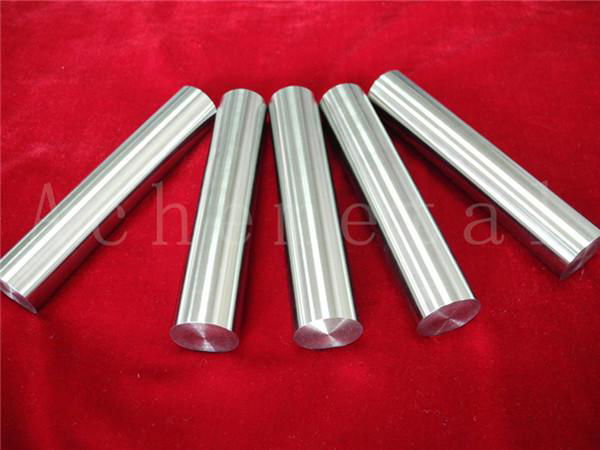The melting point of tungsten-molybdenum alloy is improved along with the increase of tungsten content. When the tungsten content is increased to 25%, the melting point of the alloy is about 200℃ higher than that of pure molybdenum. Therefore, corresponding alloy components can be selected at the temperature of 2,620~3,410℃ according to the operating temperature and the required alloy melting point. This advantage is also one of advantages that enable molybdenum-tungsten alloy to be used relatively widely. The lattice constant and density of molybdenum-tungsten alloy are improved according to linear functions along with the increase of the tungsten content. The hardness and strength of tungsten-molybdenum alloy are basically improved along with the increase of the tungsten content. The highest hardness value of the alloy at room temperature is 90%~100% of the tungsten content, and its Vickers hardness value is up to 3,530~3,860MPa which is more than one time that of pure molybdenum. The highest hardness value of the alloy at high temperature is 70%~85% of the tungsten content. When the tungsten content is increased from 0 to 40%, the tensile strength of molybdenum-tungsten alloy at room temperature in the processing state is increased from 617MPa to 900MPa. The nominal compositions of frequently used molybdenum-tungsten alloy include Mo-30W, Mo-50W, Mo-85W, etc
